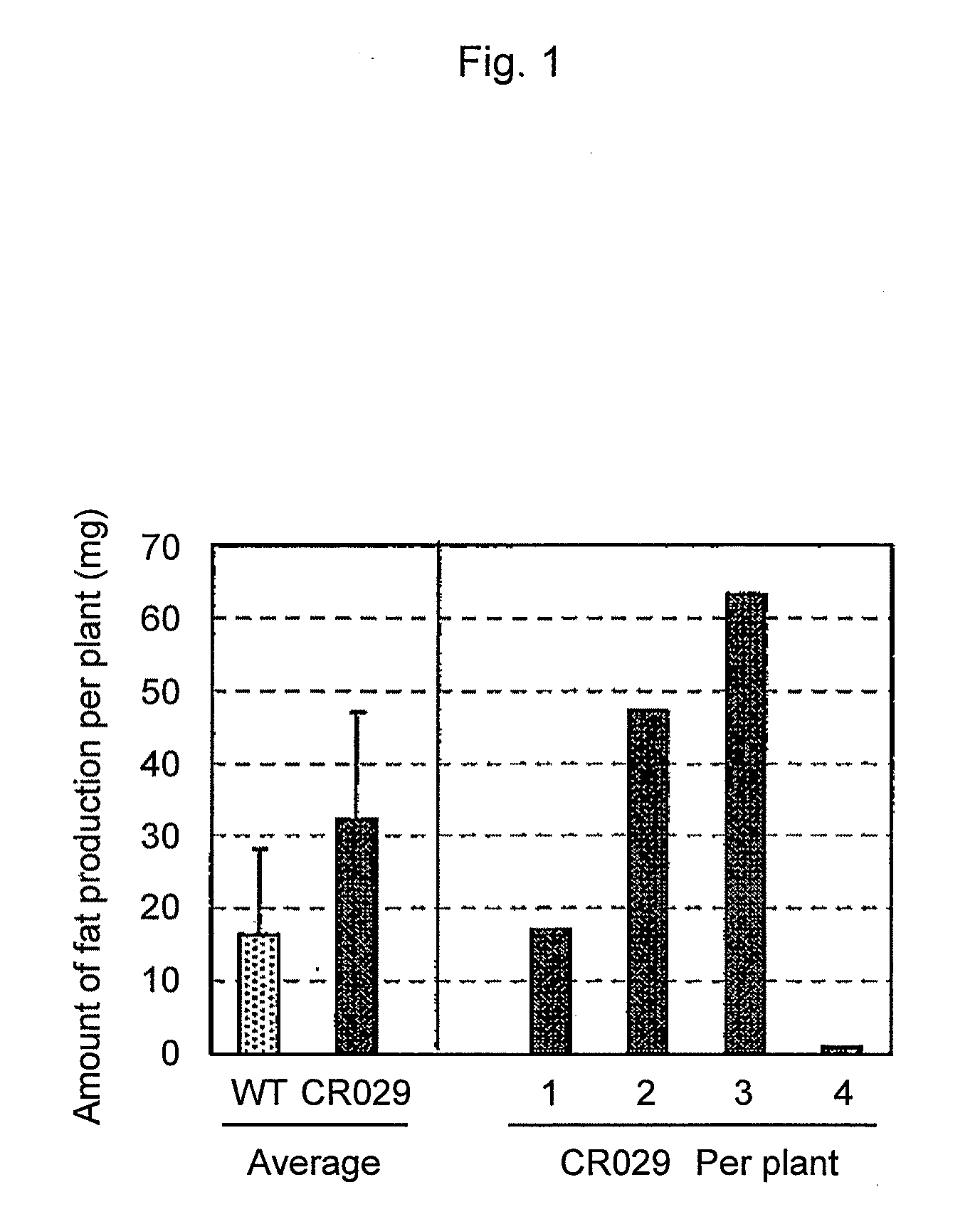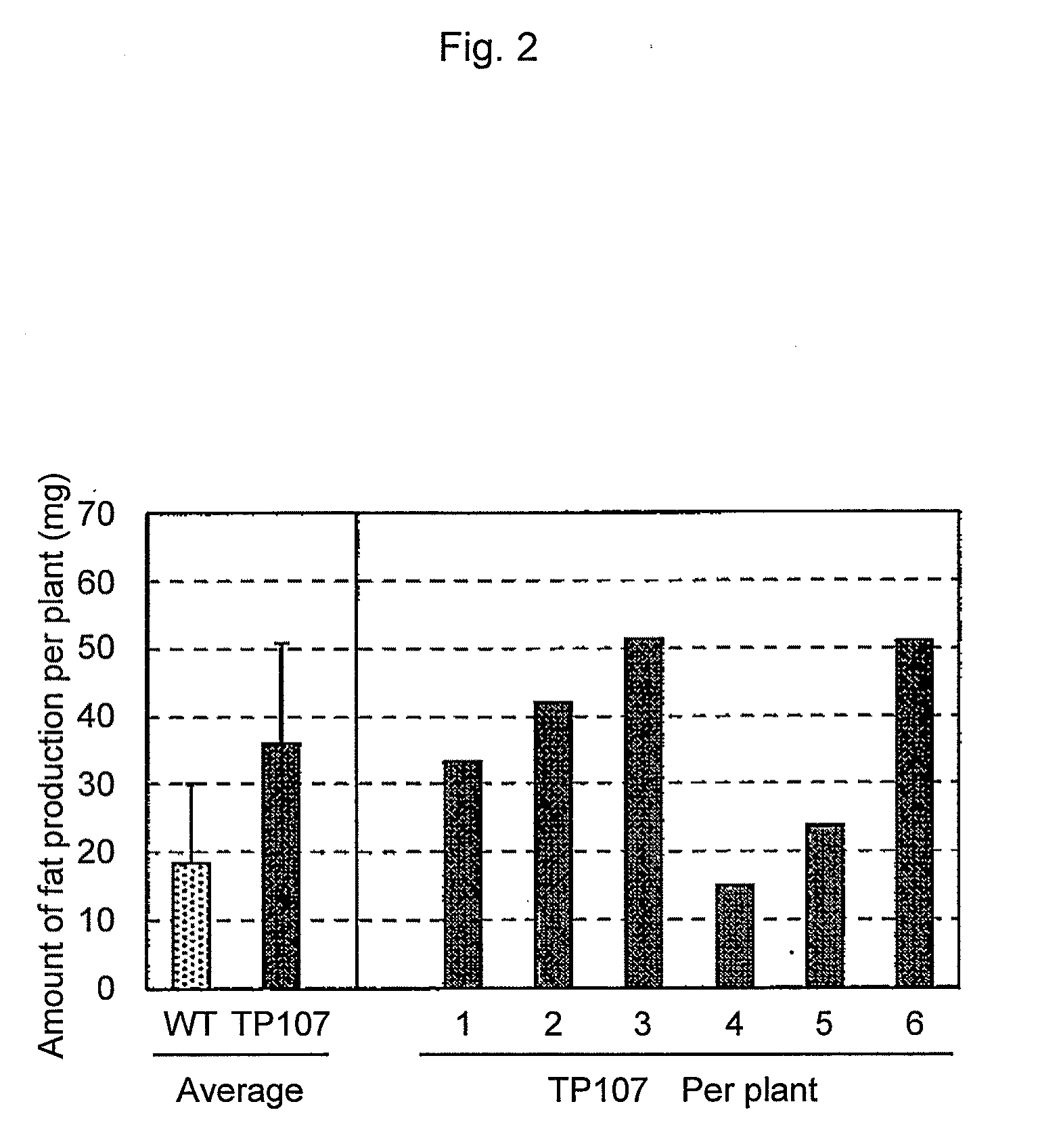Genes that increase plant oil and method for using the same
- Summary
- Abstract
- Description
- Claims
- Application Information
AI Technical Summary
Benefits of technology
Problems solved by technology
Method used
Image
Examples
example 1
[0081]In this example, fusion proteins of Arabidopsis thaliana transcription factors At3g25890 and At1g56650 to which repressor domain sequences had been added were expressed in plants, and the fat and oil content of the seeds obtained from the plants was measured.
Amplification of Transcription Factor Genes
[0082]The genes encoding the transcription factor At3g25890 and the gene encoding the transcription factor At1g56650 were obtained from the Arabidopsis thaliana cDNA library, and the regions excluding the termination codons of such genes were amplified via PCR using the primers shown below. PCR was carried out via denaturation at 94° C. for 1 minute, annealing at 47° C. for 2 minutes, and elongation at 74° C. for 1 minute, and this cycle was repeated 25 times. After the completion of PCR, the amplified DNA fragment was separated via agarose gel electrophoresis and recovered.
Forward primer for amplifying At3g25890ATGGCTGAACGAAAGAAACGC(SEQ ID NO: 5)Reverse primer for amplifying At3g...
example 2
[0096]In Example 2, a fusion protein of the Arabidopsis thaliana transcription factor At1g56650 to which a repressor domain sequence had been added was expressed in plants as in the case of Example 1, and the fat and oil content in seeds obtained from rice of graminaceous monocotyledonous plants (Olyza sative Nipponbare) was measured.
Amplification of Transcription Factor Gene, Preparation of Fusion Gene, and Construction of Binary Vector
[0097]Amplification of the transcription factor gene, preparation of the fusion gene, and construction of the binary vector were carried out in the same manner as in Example 1.
Introduction of Binary Vector into Plant
[0098]A binary vector was introduced into rice plants (Nipponbare) using Agrobacterium carrying the binary vector in accordance with the method described in JP Patent No. 3141084 to obtain calluses.
[0099]The calluses into which the gene had been introduced were subjected to selection with hygromycin at 50 ppm for a month, and calluses exh...
PUM
| Property | Measurement | Unit |
|---|---|---|
| Fraction | aaaaa | aaaaa |
| Weight | aaaaa | aaaaa |
Abstract
Description
Claims
Application Information
 Login to View More
Login to View More - R&D
- Intellectual Property
- Life Sciences
- Materials
- Tech Scout
- Unparalleled Data Quality
- Higher Quality Content
- 60% Fewer Hallucinations
Browse by: Latest US Patents, China's latest patents, Technical Efficacy Thesaurus, Application Domain, Technology Topic, Popular Technical Reports.
© 2025 PatSnap. All rights reserved.Legal|Privacy policy|Modern Slavery Act Transparency Statement|Sitemap|About US| Contact US: help@patsnap.com


